10 simple diet changes nutritionists are making this fall
Here’s how to reset your eating habits come cooler months.
Updated on March 26, 2025
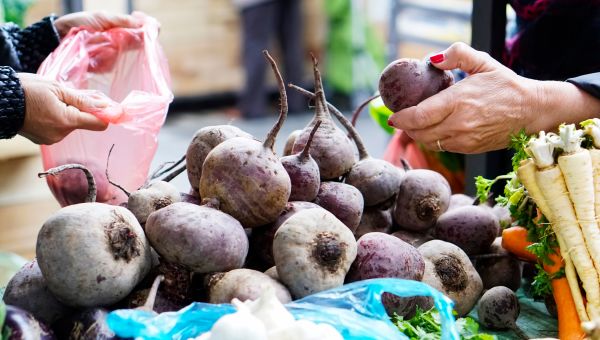
Even if you’re many years removed from the classroom, there’s just something about fall that inspires the feeling of a fresh start. Cooler temperatures, football season, and falling leaves all set the scene. Also accompanying fall: mouthwatering produce like apples, gourds, beets, Brussels sprouts, plus all sorts of varieties of citrus.
The start of the season is an opportune time to evaluate and assess your diet.
After the summer months you may be in need of a reset, says Sydney Greene, RD, in Boulder, Colorado. “All of the traveling, barbecues, and parties can wreak havoc on routines, causing people to eat or drink things they normally would not consume,” she explains.
Here are 10 ways to reinvent your diet this fall season.
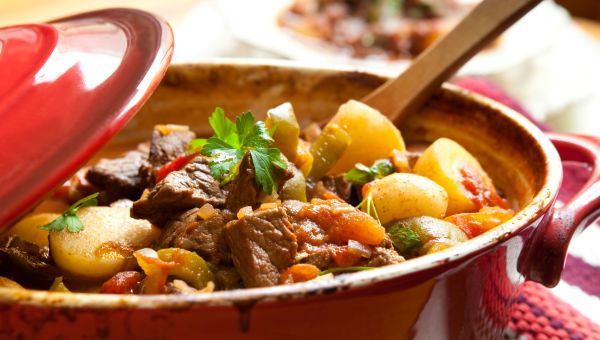
Break out your slow cooker
If you’re short on time—or frankly, just don’t love cooking—a slow cooker is ideal, says Greene. It lets you assemble meals in the morning so that a delicious dinner awaits when you arrive home from work. (Just freeze the leftovers for a pre-made meal later on, too.)
Another benefit to the slow cooker? Even lean meats like chicken and turkey turn fork-tender during its hours cooking on low heat. And slow cookers are also a simple way to boost veggie intake, says Jackie Newgent, RDN, a Los Angeles-based culinary nutritionist, private cooking coach, and author of The All-Natural Diabetes Cookbook.
Cooking tip: Use your slow cooker to make meat-based soups or stews. And don’t worry, vegans and vegetarians can also benefit from a slow cooker: Newgent often makes a Creamy Eggplant Korma in her crockpot.
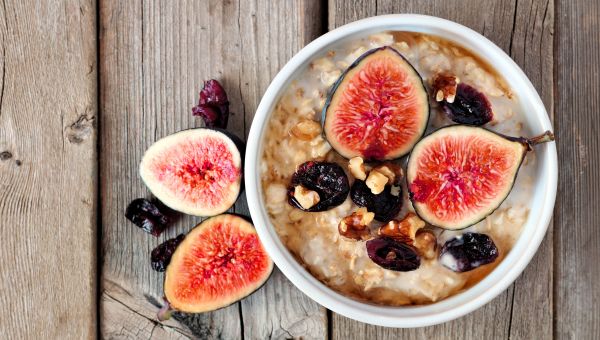
Make over breakfast with steel-cut oats
Breakfast cereal is often a dessert in disguise. Some contain more than 15 grams of sugar per serving. Greene recommends staying away from any cereal with sugar (or syrup, nectar, or juice) in the first three ingredients.
Start your morning off with steel-cut oats instead. They’re high in soluble fiber, which forms a gel-like substance when mixed with water that’s thought to help lower cholesterol and keep blood sugar stable.
Cooking tip: Watch how much sugar you add to your bowl. Instead of stirring in maple syrup or brown sugar into your cooked oatmeal, Greene recommends adding 1/2 ripe banana to the pot before you put in liquid. The banana is naturally sweet and provides a dose of potassium.
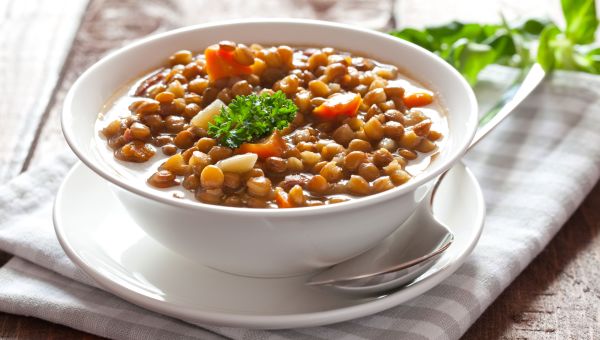
Add more beans to your diet
Legumes like chickpeas, lentils, kidney beans, and black-eyed peas are naturally low in fat, but rich in fiber and nutrients, including B vitamins, iron, copper, magnesium and more. And, research suggests that people who eat beans regularly are less likely to be obese.
Cooking tip: Add more beans to your diet by making more soups—think lentil or black bean. You could also cook bean-based chilis or sloppy joes. Another option: Enjoy a Mexican-style breakfast made up of refried beans, eggs, and a tortilla. If you’re a chickpea fan, combine them in a food processor with tahini (a sesame condiment), olive oil, garlic, and a dash of salt to make hummus.
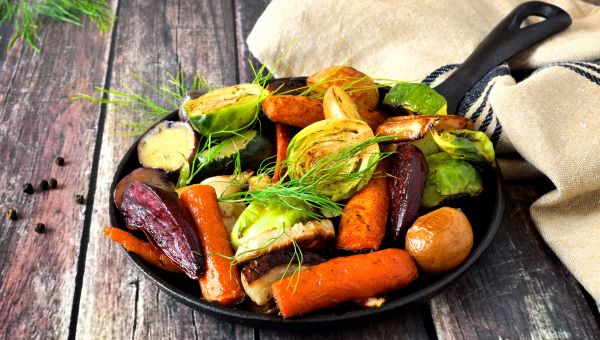
Load up on root veggies
Root veggies have high amounts of fiber, which will slow the release of natural sugars, keeping you feeling full for longer, Greene says. They’re also rich sources of vitamins and mineral that are key to good health. Some popular and healthy fall root veggies include beets, carrots, and sweet potatoes.
Beets in particular contain betalain pigments which offer anti-inflammatory and antioxidant benefits, says Newgent. Antioxidants are substances that help prevent or delay damage to cells in the body. Carrots are also a good source of beta-carotene and sweet potatoes are packed with vitamin A and C, along with potassium and manganese, says Greene.
Cooking tip: Make avocado toast using cooked, sliced sweet potatoes in place of bread, recommends Greene. Or, suggests Newgent, pair chilled, roasted beets with goat cheese, fresh basil, and balsamic vinaigrette for a salad.
Plan ahead: On Sunday, roast up a sheet pan full of root veggies cut into bite-sized pieces, then use them in a variety of salads and side dishes throughout the week.
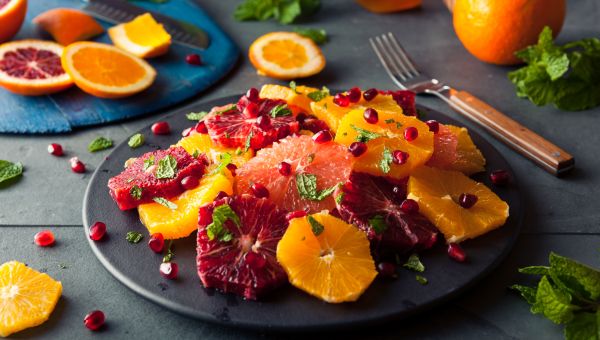
Stock up on citrus
Citrus fruits are packed with vitamin C, which is involved in immune function , says Newgent. This season, feast on oranges and grapefruits and more unusual citrus varieties such as sour-tasting kumquats. “You can eat the whole thing—peel and all!” says Newgent.
Cooking tip: Citrus is delicious to eat on its own. But you can also add it to smoothies or salads. Try grapefruit and avocado or roasted beets with oranges.
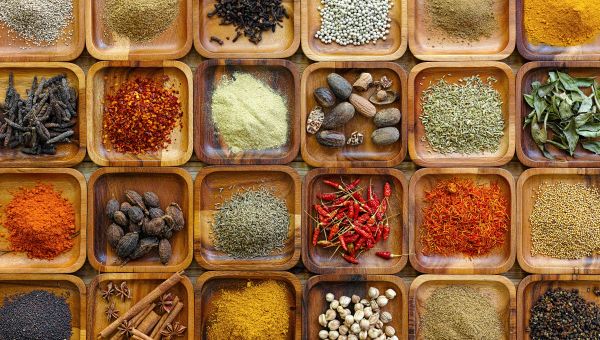
Experiment with new spices
Trying spices from around the world can make everyday foods—like chicken—taste different and newly tempting. Greene personally likes garam masala, an Indian spice blend that typically includes coriander, cumin, cardamom, and cloves. It’s delicious—and no two blends taste exactly the same. Try adding it to stews or chili, or including it in a spice rub for roasted vegetables.
Cooking tip: Play around with familiar fall-friendly spices—like cinnamon and pumpkin pie spice—in savory dishes, rather than sweet ones, suggests Newgent. She recommends adding a pinch of cinnamon in pasta sauces or pilaf, and a small amount of pumpkin pie spice to chili or guacamole.
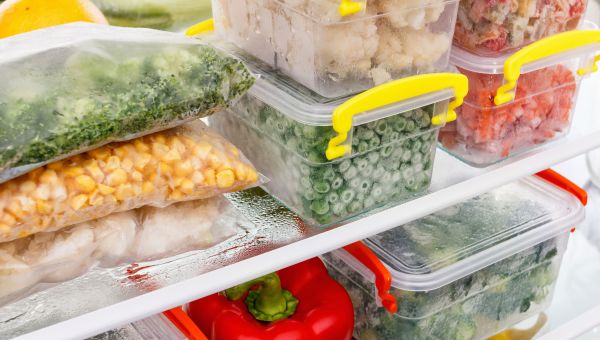
Freeze for later
“Utilize your freezer for items other than packaged foods,” says Greene. If you have a bounty of fresh fruits and vegetables, chop them up and stash them in freezer-safe containers or bags, she says. That way, you’ll always have ingredients on hand for stir-frys, soups, and more.
Cooking tip: Try adding frozen berries to pancake batter or oatmeal for a little natural sweetness. And don’t forget that fruits and veggies (such as cauliflower and zucchini), can be thrown into smoothies straight from the freezer.
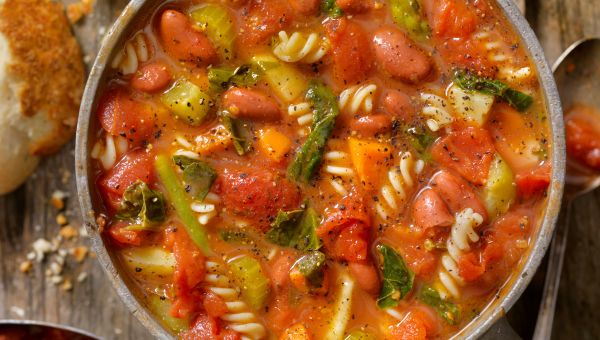
Make soups
Fall is ideal for a warm bowl of soup, and making a broth-based soup or stew at home can be an easy way to increase your vegetable intake. Try to limit or avoid cream-based soups, which tend to be higher in saturated fat, and consider adding whole grains and/or a lean protein such as chicken to your pot.
Cooking tip: Double the recipe and freeze the leftovers in single-portion containers. That way, when it’s late and the thought of cooking is unappealing, you’ll have a healthy, easy-to-reheat option on hand.

Pack your lunch
Are you packing a lunch box for your kids to bring to school? Newgent suggests packing a “grownup healthy lunchbox” for yourself, too. This will allow you to manage the amount of nutrient-rich, healthy foods you’re eating.
Cooking tip: You can pack your lunchbox—or brown bag—full of leftovers. All those soups you made travel well for lunch, as do quiches and grain-based salads or bowls.

Visit the farmers’ market
Opting to eat in-season produce can be easier on your wallet, since grocery stores will often lower prices on foods that are abundantly available. And, fruits and vegetables that are fresh and seasonal tend to taste better, too.
Newgent recommends making weekly visits to the farmers’ market part of your fall routine. During trips, you can browse for the most tempting produce and ask farmers for recommendations about how to serve it up.
Cooking tip: Gather up the apples and pears that are in season and use them to make fruit-based desserts like pies and crumbles. Or eat them alone (with some peanut or almond butter) as a snack.
Many of the vegetables in season—including cauliflower, carrots, Brussels, sweet potatoes, and winter squashes—are ideal for roasting. Chop them into bite-sized pieces and toss with olive oil, salt, and pepper. Spread them across a baking sheet and bake at 425ºF for 30 to 45 minutes, depending on the vegetable.

Mayo Clinic. Dietary fiber: Essential for a healthy diet. December 11, 2024.
Harvard TH Chan School of Nutrition. Legumes and Pulses. Accessed March 26, 2025.
Tucker LA. Legume Intake, Body Weight, and Abdominal Adiposity: 10-Year Weight Change and Cross-Sectional Results in 15,185 U.S. Adults. Nutrients. 2023 Jan 16;15(2):460.
Tucker LA. Bean Consumption Accounts for Differences in Body Fat and Waist Circumference: A Cross-Sectional Study of 246 Women. J Nutr Metab. 2020 Jun 6;2020:9140907.
Knez E, Kadac-Czapska K, Dmochowska-Ślęzak K, Grembecka M. Root Vegetables-Composition, Health Effects, and Contaminants. Int J Environ Res Public Health. 2022 Nov 23;19(23):15531.
Carr AC, Maggini S. Vitamin C and Immune Function. Nutrients. 2017 Nov 3;9(11):1211.
Moore A, Khanna D. The Role of Vitamin C in Human Immunity and Its Treatment Potential Against COVID-19: A Review Article. Cureus. 2023 Jan 13;15(1):e33740.
Harvard Health Publishing. Soup up your meals. January 1, 2022.
More On


video

article
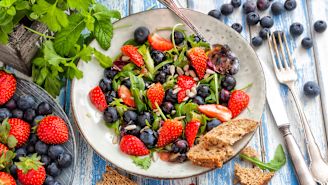
slideshow


video


video
